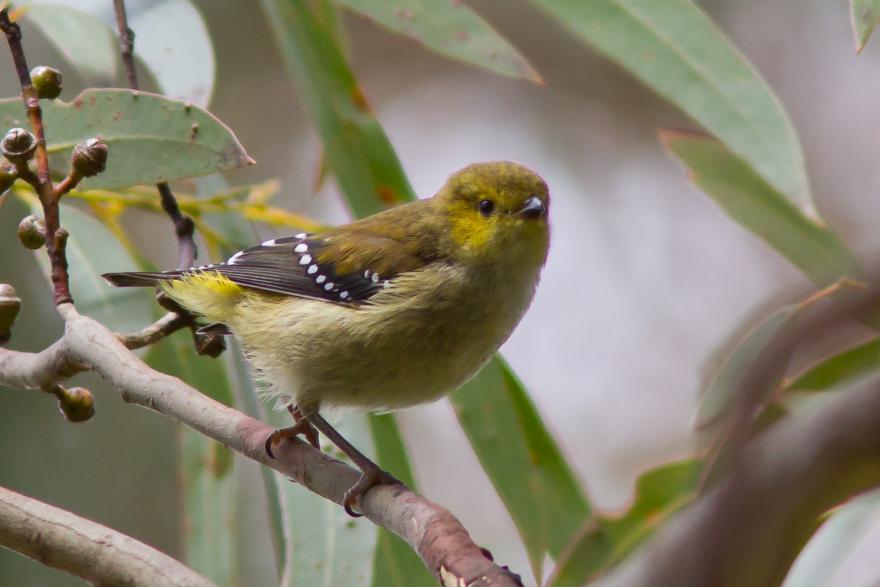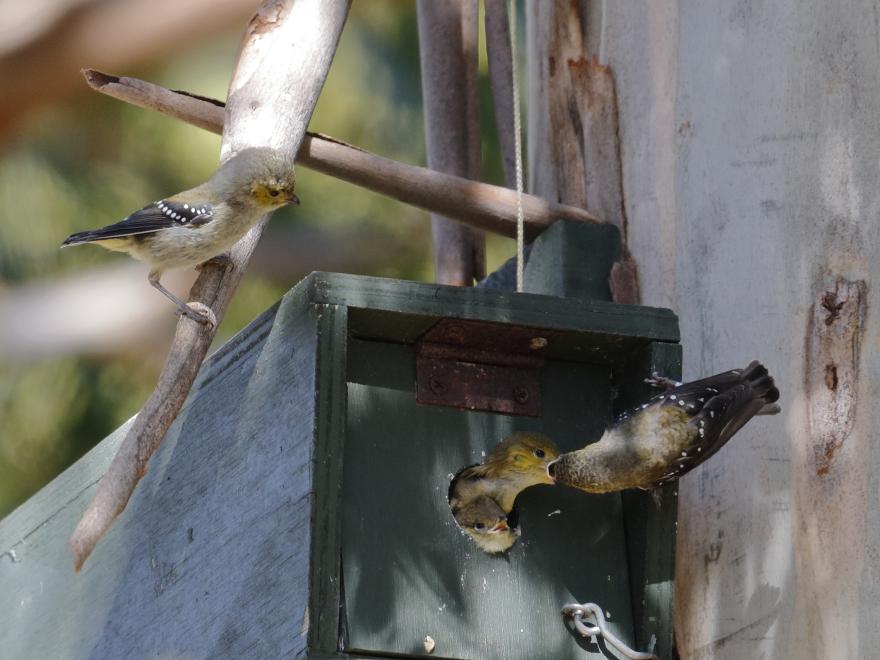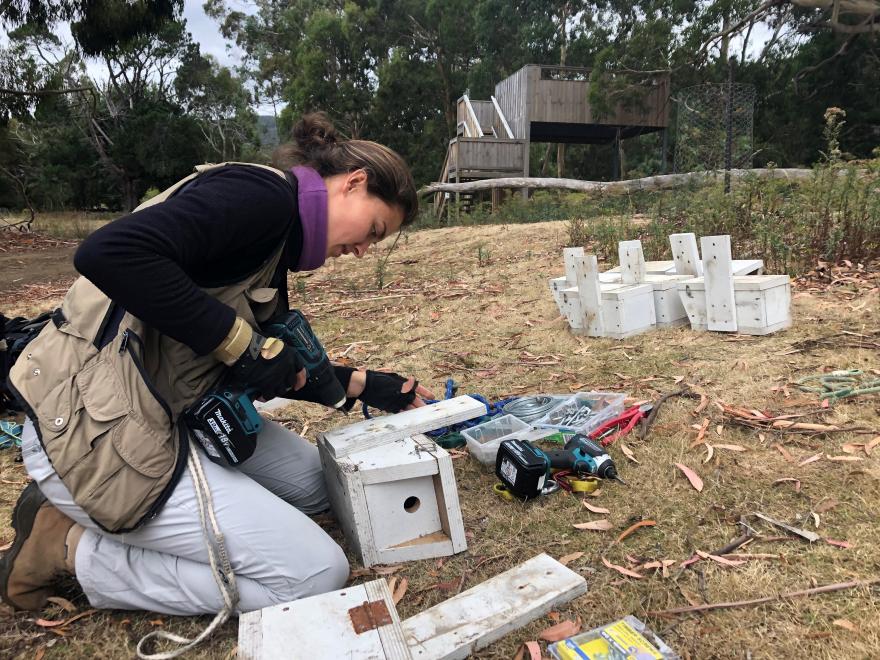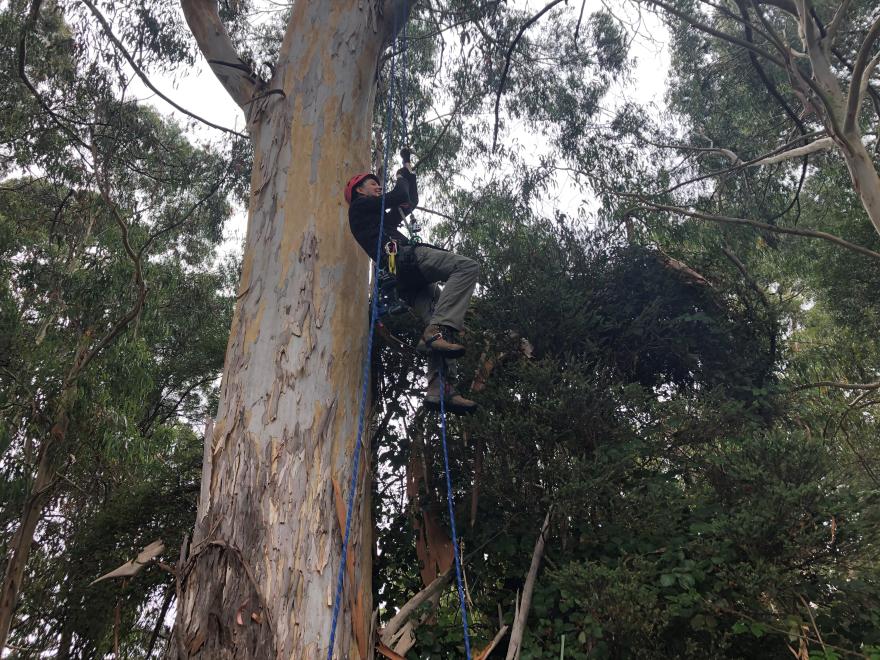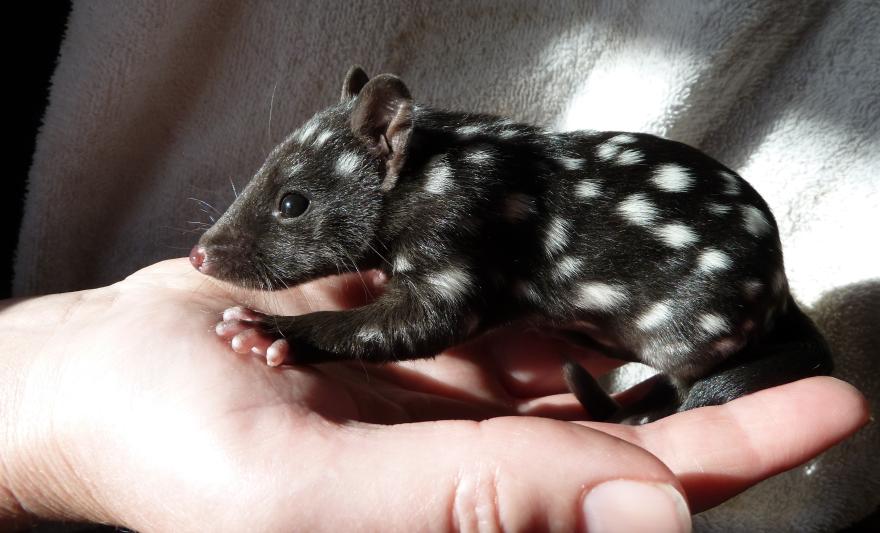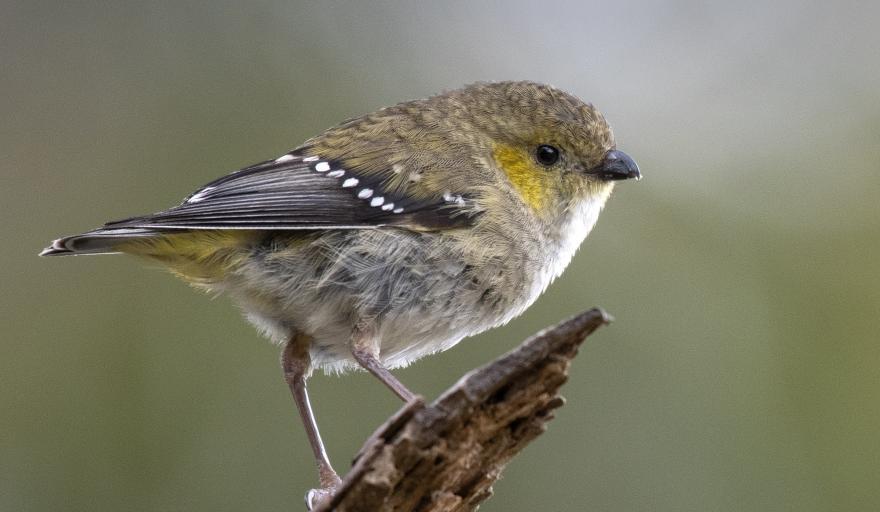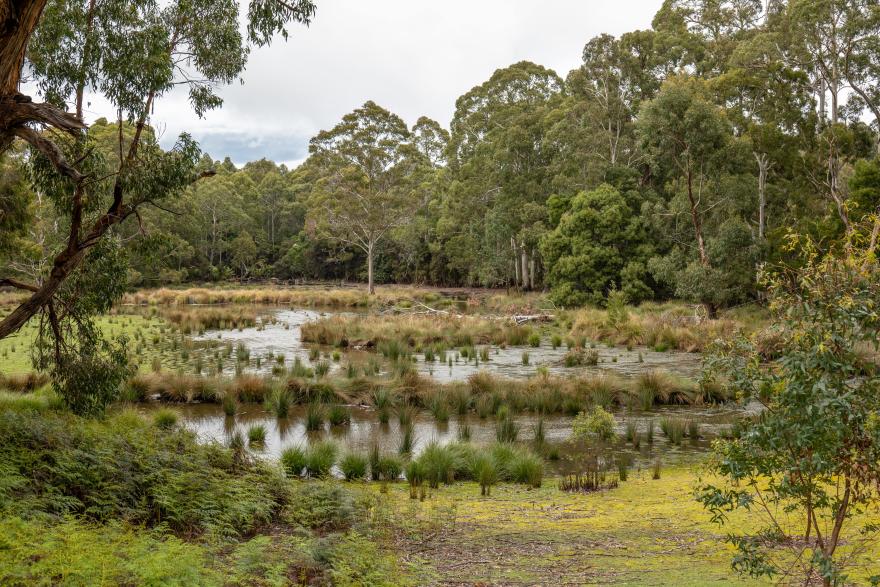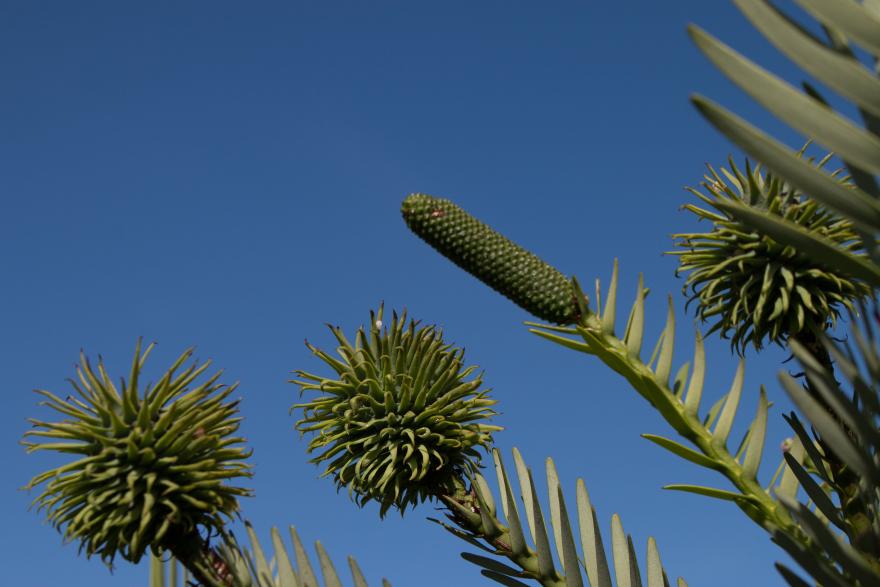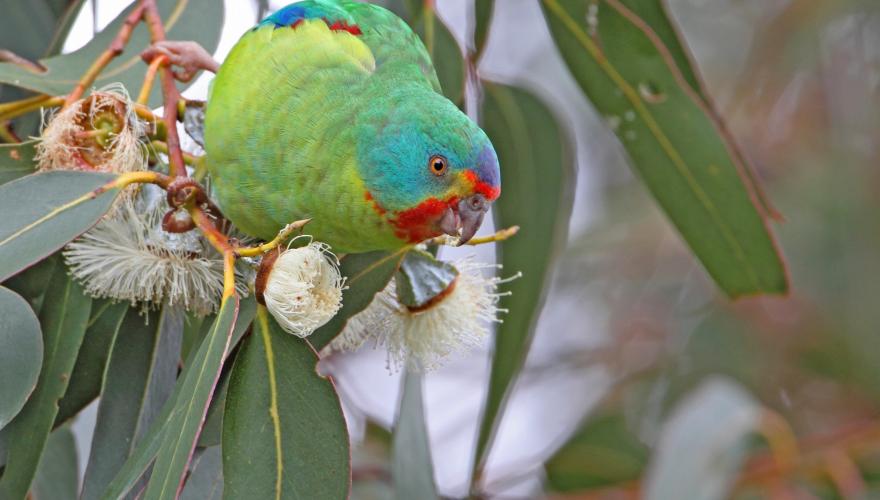Forty-spotted Pardalotes hold a very special place in our hearts as they were the original motivation for Tonia to buy the first Inala property. The little colony peeping over the fence drew her attention to their predicament.
The Forty-spotted Pardalote is endemic to Tasmania. Although once spread along eastern Tasmania, 'forty-spots' are now restricted to a few peninsulas in the south-east and offshore islands, including Bruny Island. These small birds (10cm) are listed as endangered, threatened by habitat loss, drought and a species of parasitic fly (Passeromyia longicornis), which enter the birds nests and cause high rates of nestling mortality.
Forty-spots are dependent on white gum (Eucalyptus viminalis) for food and nesting hollows.
They forage among the leaves for invertebrates and manna, a sticky, sugary substance exuded from the leaves and stems. To collect the manna, the birds make small cuts in the leaves and stems using the specialised hook on the end of their bill. Once some sap has seeped out, the birds return to collect it.
Inside tree hollows, forty-spots build a dome shaped nest, using grass and lined with feathers.
"We have a number of nest boxes and chainsaw-cut hollows"
Within the Inala Nature Reserve, we have a number of nest boxes and chainsaw-cut hollows, installed by the Australian National University, as well as a number designed by the Bruny Island Mens Shed. These nest boxes are part of an array across south-eastern Tasmania where breeding is intensively monitored by the University group. In particular, they help us keep a close eye on the presence of fly parasites, which have only been recorded once at Inala. If discovered early, we are able to mitigate the impacts.
"We started planting white gums around Bruny Island in 1985"
Seeing the need for habitat restoration, we started planting white gums at Inala and around Bruny Island in 1985, becoming part of the very first forty-spotted pardalote recovery team. The original little Inala colony has grown to be a strong population and has spread into these newly planted areas. Today planting continues using seed collected and cultivated on the property.
Nest Box Refit Project 2023
In the 2022 breeding season the monitoring team (including Tonia, Dr Andrew Hingston and Dr Fernanda Alves) noted that the slightly larger Striated Pardalotes were outcompeting the Forty-spots for use of the nesting boxes and other nesting sites. This was cause for great concern resulting in further collaboration with ANU's Difficult Bird Group to develop a mitigation plan. Prior to the start of the 2023 breeding season, new nesting box face plates with varying smaller hole diameters were kindly made by volunteers at The Men's Shed. These were installed by a team of expert tree climbers led by Dr Fernanda Alves. So far, ongoing monitoring of the nest sites by Dr Andrew Hingston and Dr Alves have shown that the 24mm diameter hole size appears to be the most effective in allowing access for the Forty-spots, while excluding the Striated Pardalotes from entering the nests. The nest boxes will continue to be closely monitored over the rest of the breeding season and over the 2024 breeding season.
This project is made possible thanks to the Wild Country Environmental Fund and donations to the Inala Foundation.
Recommended Reading: National Recovery Plan for Forty-spotted Pardalote (Draft)
Dr Fernanda Alves (Australian National University - Difficult Birds Research Group) attaching mounting plate to nest boxes.
Dr Fernanda Alves installing upgraded nest boxes
